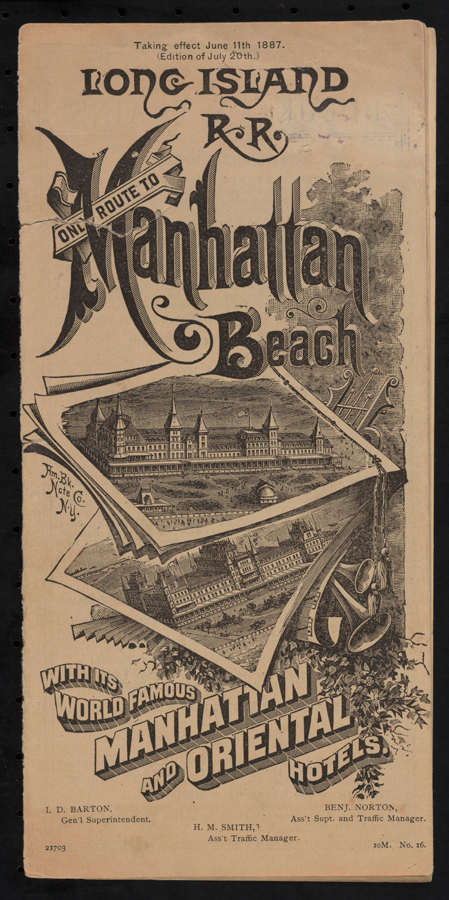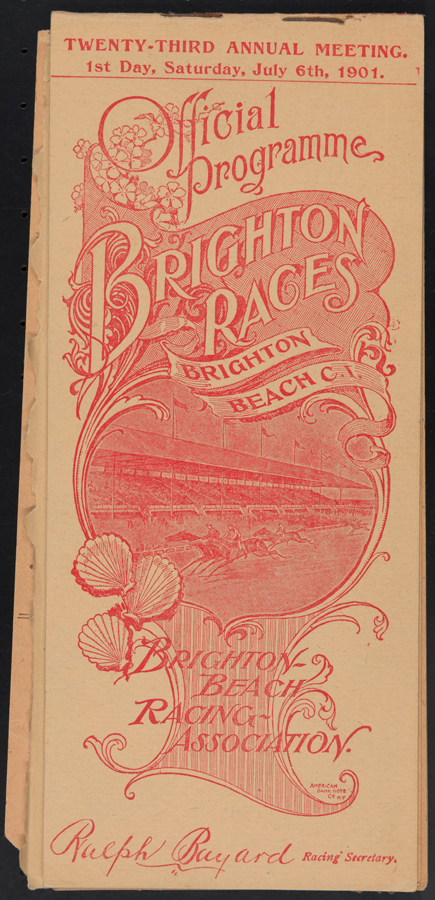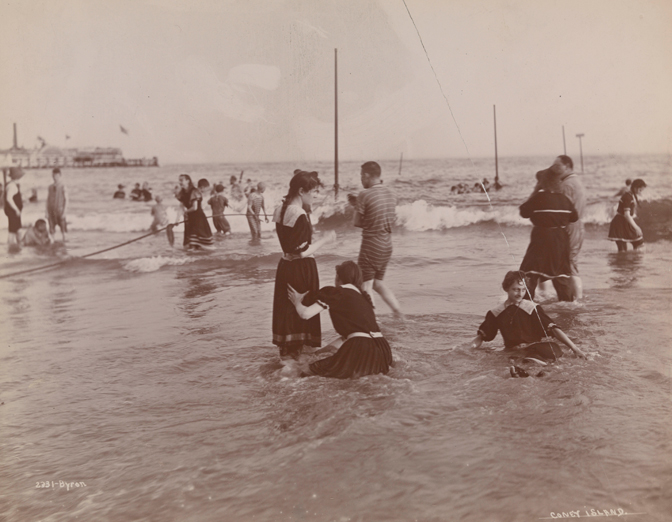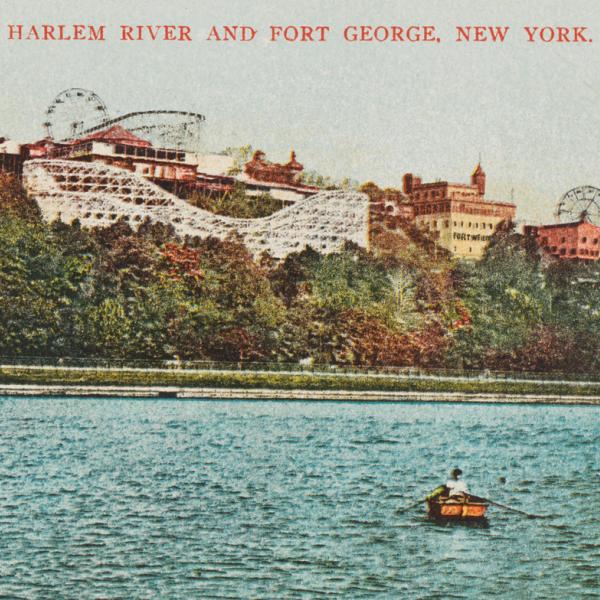Hitting the Beach in the 19th Century
Tuesday, May 22, 2018 by
Now that the weather has (finally) taken a turn towards summer, many New Yorkers are likely thinking about escaping the city for the beach in the months ahead. Fleeing the city for the seaside is something New Yorkers have been doing for the past two hundred years, since early resorts were built on the nearby Long Island Sound and Atlantic coastlines.
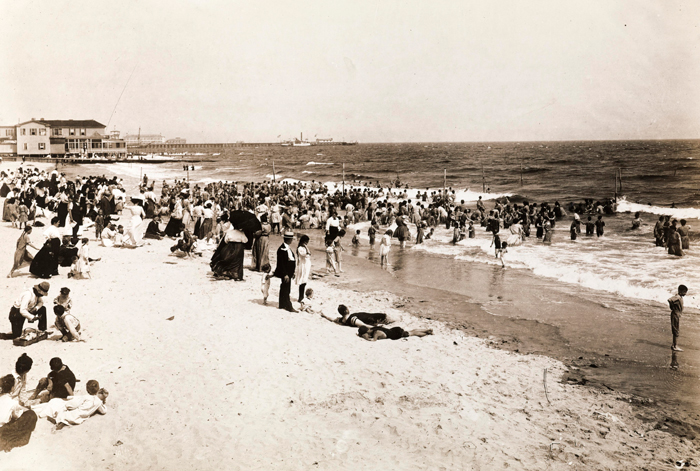
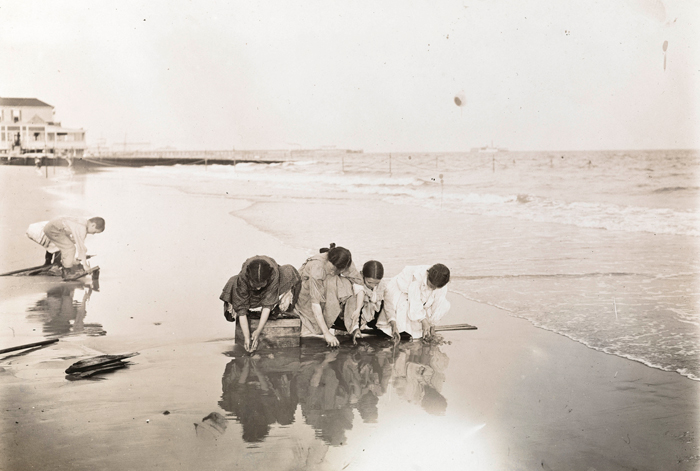
The first seaside resorts in the New York City area were built in the late 1820s, and development accelerated after the Civil War. These resorts primarily attracted wealthy New Yorkers, who reached their destinations in Rockaway, Brighton Beach, and Manhattan Beach via the Long Island Rail Road.
Manhattan Beach, located on a peninsula at the eastern end of Coney Island in Brooklyn, was developed on 500 acres of salt marsh in 1877 by Austin Corbin of the Manhattan Beach Improvement Company. The Manhattan Beach Hotel was also built in 1877 by Corbin’s firm, and designed in the Queen Anne style by J. Pickering Putnam. The hotel featured 150 rooms over four floors, and entertained guests with activities such as fireworks displays and performances by John Philip Sousa. Click here to view an extensive food and beverage menu for the hotel from July 1899. More entertainment could be found at the Sheepshead Bay Racetrack and Brighton Beach Racetrack in nearby Brighton Beach. Brighton Beach is situated between Manhattan Beach and Coney Island, and featured its own regal hotel, the Brighton Beach Hotel.
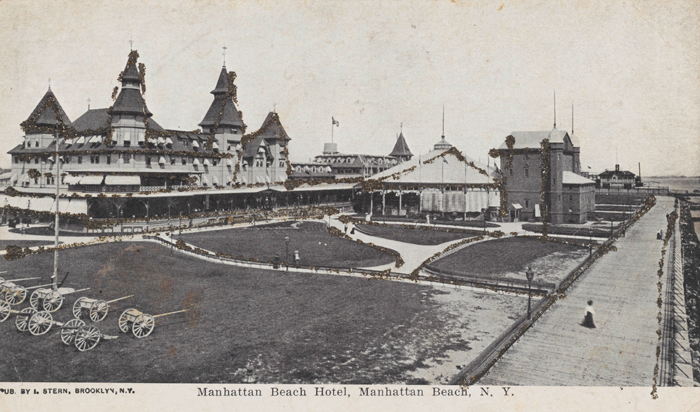
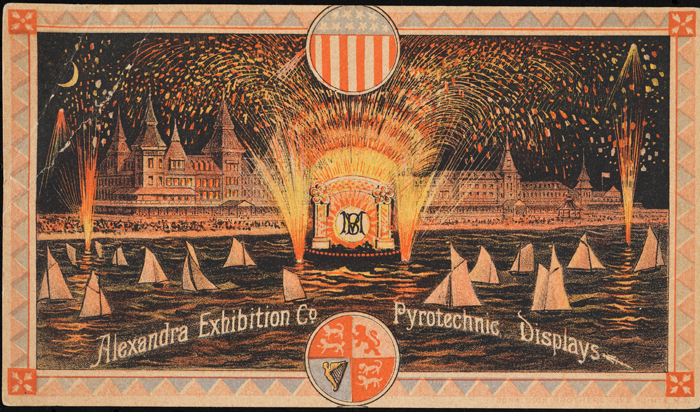
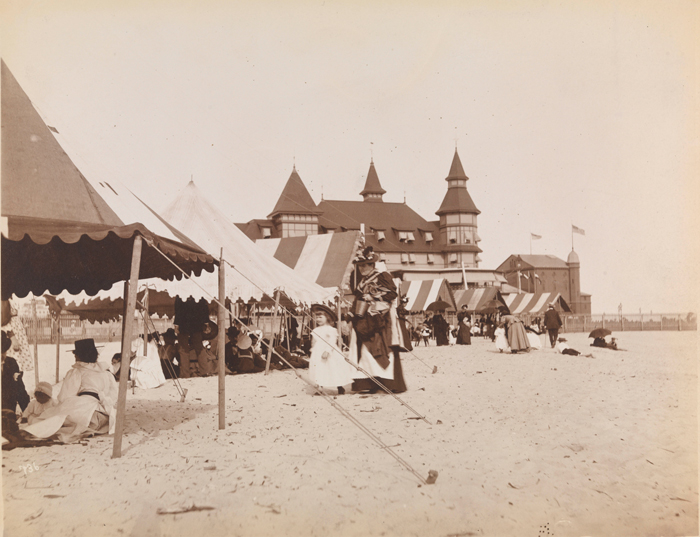
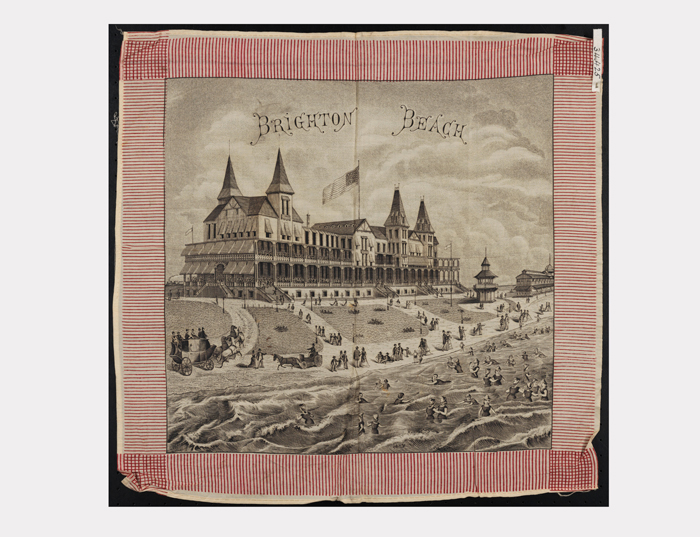
Coney Island was also a popular 19th century seaside destination, as it is today. After the Civil War, five railroads were built to connect Coney Island with the rest of Brooklyn, making it more accessible than its fellow Brooklyn beach communities. Visitors were attracted not only by the beach, but by the three area thoroughbred racetracks, heavyweight boxing matches, gambling, and dance halls. Between 1897 and 1904, three amusement parks opened on Surf Avenue: Steeplechase Park, Luna Park, and Dreamland. All three original parks have since closed, but in 2010 a new Luna Park opened across the street from the original site.
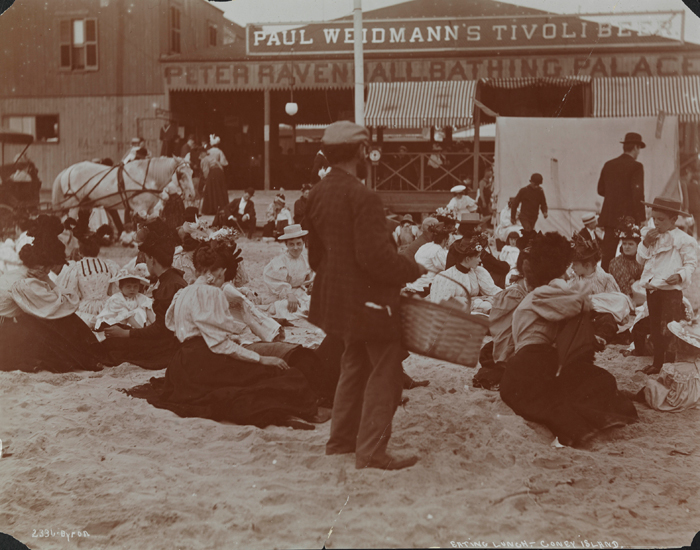
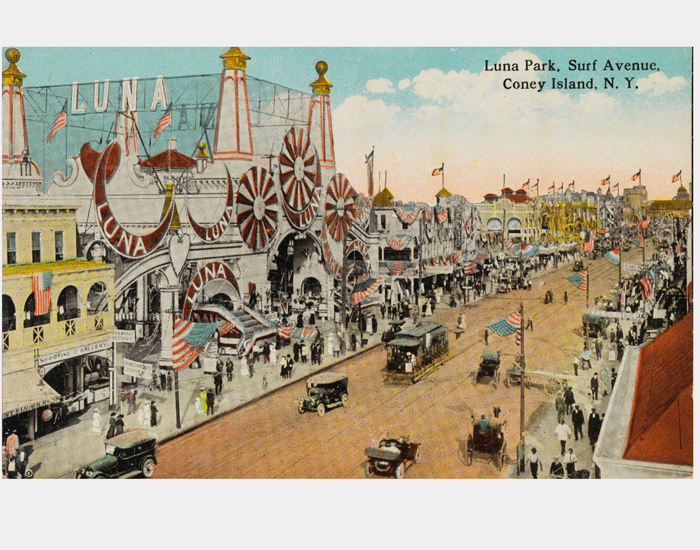
Those who opted to sun on the sand and venture into the water could use the assistance of ropes strung above the water into the surf — it was probably hard to keep one’s balance in those heavy wool bathing costumes!
